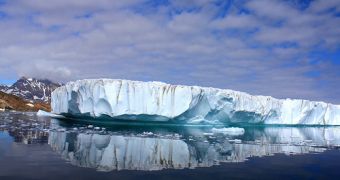Last year, the melting of the Greenland Ice Sheet established new records, and the consequences of this kind of climate will be visible in coming decades, as the sea level rises.
These are the conclusions of a new research, with several aspects sponsored by WWF (World Wildlife Fund), the US National Science Foundation (NSF) and NASA.
The study analyzed the surface temperature anomalies of the Greenland ice sheet, adding information to the estimates of surface melting from satellite data, ground observations and models.
Dr. Marco Tedesco is the Director of the Cryosphere Processes Laboratory at the City College of New York (CCNY – CUNY), and also the leader of a project studying the variables that affect ice sheet melting.
Along with his co-authors, he writes in a recent article, that the summer temperatures in 2010 were up to 3ºC above the average, and in winter, there was a reduction in snowfall.
To have a better idea of the changes in temperature, Nuuk – the capital of Greenland, had the warmest spring and summer since they started keeping records in 1873.
Dr. Tedesco said that “this past melt season was exceptional, with melting in some areas stretching up to 50 days longer than average.
“Melting in 2010 started exceptionally early at the end of April and ended quite late in mid- September.”
As a consequence, bare ice was exposed earlier than the average and longer than previous years, and this also contributed to the warmth record, because “bare ice is much darker than snow and absorbs more solar radiation,” according to Dr. Tedesco.
“Other ice melting feedback loops that we are examining include the impact of lakes on the glacial surface, of dust and soot deposited over the ice sheet and how surface meltwater affects the flow of the ice toward the ocean.”
Dr. Martin Sommerkorn, a WWF climate specialist, said that “sea level rise is expected to top one meter by 2100, largely due to melting from ice sheets.
“And it will not stop there – the longer we take to limit greenhouse gas production, the more melting and water level rise will continue.”
The study was published in an article appearing in Environmental Research Letters.

 14 DAY TRIAL //
14 DAY TRIAL //